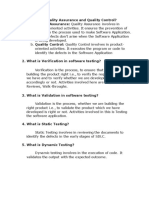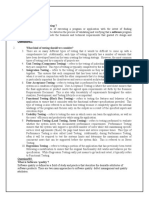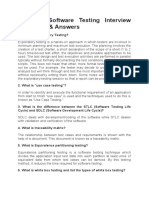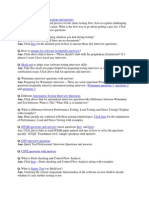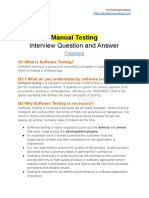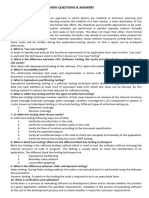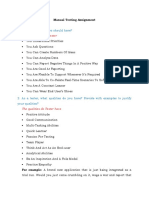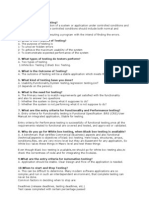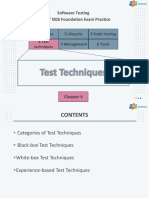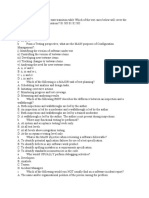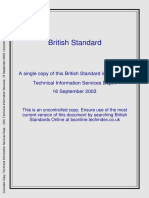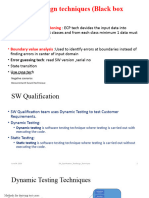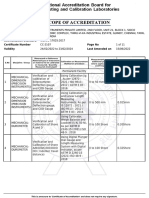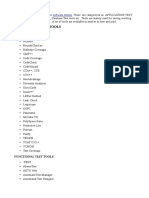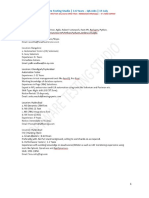0% found this document useful (0 votes)
8 views17 pagesSoftware Testing Course Outline
The document outlines the fundamentals of software testing, covering various testing types such as boundary testing, unit testing, integration testing, and more. It includes a comprehensive collection of multiple-choice questions designed to enhance knowledge in software testing concepts and practices. Additionally, it discusses the roles of different testing methodologies and tools used in the software development lifecycle.
Uploaded by
sky gCopyright
© © All Rights Reserved
We take content rights seriously. If you suspect this is your content, claim it here.
Available Formats
Download as DOCX, PDF, TXT or read online on Scribd
0% found this document useful (0 votes)
8 views17 pagesSoftware Testing Course Outline
The document outlines the fundamentals of software testing, covering various testing types such as boundary testing, unit testing, integration testing, and more. It includes a comprehensive collection of multiple-choice questions designed to enhance knowledge in software testing concepts and practices. Additionally, it discusses the roles of different testing methodologies and tools used in the software development lifecycle.
Uploaded by
sky gCopyright
© © All Rights Reserved
We take content rights seriously. If you suspect this is your content, claim it here.
Available Formats
Download as DOCX, PDF, TXT or read online on Scribd
/ 17






